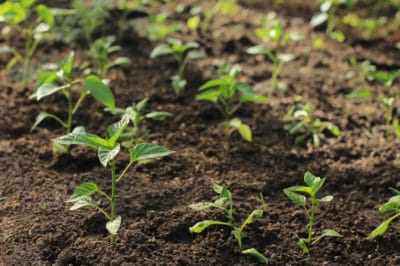In The Tropics
In USDA zones 10 and 11, pepper plants will grow like weeds. Volunteer seedlings will pop up the garden year round. In these tropical zones, scatter seed into a cultivated garden bed at any time of the year. Thin them out to 12-inch spacing as they grow.
Good soil amended with high-quality compost will help protect plants from stress and resulting insect damage.
In Cooler Climates
In USDA zones where the winter temperatures get to freezing or below, pepper seeds should be started 8-12 weeks before the last frost date. The last frost date in your region is available online and in your local almanac. This is a guide by which to plant seeds indoors or in a greenhouse. Pepper plants are not necessarily ready to go outside after the last frost date.
Days To Maturity
Usually, seed packets or plant starts that you purchase will have a ‘days to maturity’ section with a number. Peppers tend to be somewhere between 65-100 depending on the variety. In plants that are typically started indoors like peppers, this number refers to the time between when the plants are set out and when harvest begins.
Keep in mind that pepper will continuously produce fruit until the season is over. The goal is to reach maturity as early as possible so you can harvest as much fruit as possible.
Guide to timing pepper planting:
- 8-12 weeks before last frost date
- Days to maturity does not include sprouting seed
- Hot peppers usually have longer growing seasons
- Transplant outside 2 weeks after last frost or when soils are 65°F (18°C)
Hot vs. Sweet Peppers
Hot peppers are known for having longer growing seasons compared to sweet peppers. For instance, a typical bell may take 65 days to reach maturity while a habanero will take 100. There are so many varieties available now that this isn’t necessarily true anymore.
The compact multi-colored Cheyenne pepper is very hot and matures in 60 days. Similarly, the jalapeno-like La Bomba is a spicy early bird that matures in just 56 days.
The traditional varieties of hot pepper will take longer to grow. Ghost peppers take 90 days to mature, and cayenne peppers take 70. Keep long season peppers in containers so they can be shuffled into a warm room in the event of cold weather. Dedicated gardeners overwinter peppers this way.
